PROTECT YOUR DNA WITH QUANTUM TECHNOLOGY
Orgo-Life the new way to the future Advertising by AdpathwayBeta has added two new motocross models to join the Big Brother 450 in the RX range. All-new 250 and 350 RX 2 strokes are the new bosses in town! Beta’s 450 RX has been racing on the world MXGP tour for four years and the AMA USA Supercross series for two and has proven to be a serious contender. The Italian Beta engineers decided to “Go Big” for 2026 and add not only a 250 cc bike to race in the proper classes but also added a 350 RX smoker as well for everyone else! All Beta MX models are designed with the trademark RideAbility in mind. A motorcycle that is overall easier to ride.
BETA 250 RX TWO-STROKE
 New to the lineup is the Beta RX 250 Two-Stroke and one thing is for sure this bike looks amazing.
New to the lineup is the Beta RX 250 Two-Stroke and one thing is for sure this bike looks amazing.
Another all-new model for 2026 is the smaller brother to the 350, the long-awaited 250 RX! Like the 350 version, this 2-stroke powered motocross model will appeal to all of those wanting a high-revving, lightweight 250 that can tear up berms with a distinctive sound that can only be heard from a Beta. The 250 RX also receives new engine cases along with the new cylinder, cylinder head, and exhaust. The 250 uses a single-spark head. Finally, a Beta Moto model that can run in many 250 classes.
 Rideability of the bike from what we have seen looks to be really smooth and fast but we will have to get our hands on one to know for sure.
Rideability of the bike from what we have seen looks to be really smooth and fast but we will have to get our hands on one to know for sure.
BETA 350 RX TWO-STROKE
 Something we’re very excited about is the Beta RX 350 as we have been riding 300cc models in the past it will be interesting to feel what the extra 50cc’s have to offer.
Something we’re very excited about is the Beta RX 350 as we have been riding 300cc models in the past it will be interesting to feel what the extra 50cc’s have to offer.
All new for 2026, this new model replaces the 300 version for the 2026 season. New engine cases, bore, and stroke, as well as a twin-plug head to ignite the special power only a big-bore 2-stroke can provide. The longer crankshaft, combined with the final gearing ratio of 13/47, provides a large amount of torque and overall horsepower that will turn some heads. This new 350 motocrosser will thrive in many different track conditions. Clearly in a class of its own!
 Beta has been spending a lot of time working on perfecting their two-stroke line up.
Beta has been spending a lot of time working on perfecting their two-stroke line up.
BETA 450 RX FOUR-STROKE
 A bike we’ve ridden and tested previously but Beta has made some changes for 2026.
A bike we’ve ridden and tested previously but Beta has made some changes for 2026.
Proven through races all over the world, including the USA Supercross series and MXGP. The 450 RX provides a ride like no other, quick turning yet stable; powerful yet easy to ride, are just a few things the press is saying about the 4-stroke model. An engine with enough power for a top-level pro rider while providing the right amount of power to the amateur as well. For 2026, the 450 RX receives a new cylinder head with improved flow that provides even more power. This, along with a matched intake manifold and a new exhaust, means the 450 will still bark with power but do it in a quieter way. A redesigned counterbalance shaft to reduce vibration and new mapping to go with the new cylinder head and exhaust.
 Let’s take a look at some of the features of the 450 RX four-stroke.
Let’s take a look at some of the features of the 450 RX four-stroke.
Engine:
The 450cc engine development was focused on providing riders a significant performance increase compared to the previous model, offering a stronger torque curve that can be used under all conditions. This achievement was possible due to a new cylinder head with a performance-enhancing piston, a new intake manifold, and a different exhaust system. The head’s overhaul – developed through CFD analysis and many flow bench calibrations – includes an improved intake duct to enhance air circulation inside the engine. The new manifold, following the flow line, has a longer internal horn to improve the tuning of pressure waves, and thus increase their fill while intaking air. The piston includes new coatings to reduce friction and improve its performance. A newly designed counter balancer was introduced to contain vibrations and reduce rider fatigue.
 Beta has made improvements to the engine performance for 2026.
Beta has made improvements to the engine performance for 2026.
Exhaust system:
The head pipe has been redesigned to create a greater flow and to provide increased power. This new 4-stroke exhaust system is completed by a silencer, redesigned with HGS to contain the DB output, in line with the new racing standards.
 The Beta RX 450 comes with an HGS exhaust system, stock when the bike is purchased.
The Beta RX 450 comes with an HGS exhaust system, stock when the bike is purchased.
Maps:
Updated to perform better with the new motor configuration, with renewed start-up and limiter strategies.
 Map systems updated to help with the range of power on the 2026 models.
Map systems updated to help with the range of power on the 2026 models.
BETA’S 350 AND 250 RX TWO-STROKE MODELS
 Though hard to tell the differences between the two this is the Beta RX 350 two-stroke model.
Though hard to tell the differences between the two this is the Beta RX 350 two-stroke model.
Engine:
Both engine capacities received a completely new, purpose-built engine. The 350 RX was designed to obtain the greatest linear power delivery and give riders the option to exploit the great power available when needed, while the 250 RX can count on explosive performance, ready to compete in races under all conditions.
 Lightweight and fast the RX 350 two-stroke is in a class of its own.
Lightweight and fast the RX 350 two-stroke is in a class of its own.
Head:
The first noticeable difference when looking at the new engines is certainly the dual-spark plug head on the RX 350 two-stroke, while the 250cc still relies on a classic single-spark plug. This differentiates the two motorcycles’ character even further, with the 250cc providing riders with a high-revving engine that competes with the likes of 250 four-stroke bikes, while the 350cc manages to keep a greater torque and rounded delivery, enhancing its ease of recreational use, at lower speeds while still provides enough overall horsepower for race use.
Cylinder, piston, and power valve:
To further differentiate the two bikes, apart from the obvious engine capacity, Betamotor engineers worked on new cylinders and pistons, designed specifically for each engine. The power valve, too, was calibrated accurately to manage the two deliveries by adopting different springs.
Crankshaft:
The two motorcycles have a different stroke, with the 250cc reaching 72mm and the 350cc reaching 73.6mm.
Crankcase:
New engine crankcases, with different internals between the two capacities, matched with each model’s crankshaft.
Gearbox:
Gearboxes are shared between both models, with the only difference being the final ratios of the sprockets, 13/50 for the 250 and 13/47 for its big sister.
Exhaust:
Also new for both models. Exhaust systems were designed to enhance the features of both engines and differ in the internal silencer diameter, which is bigger on the 350.
 Again, hard to see a difference but this is the RX 250cc two-stroke model.
Again, hard to see a difference but this is the RX 250cc two-stroke model.
Graphics:
A modern race look, simple yet bold, the final touch to the Italian RX range.
Radiators:
Their bearing structure was strengthened to prevent any deformation that might affect their operation, even during heavy-duty use.
 The frame has always been more stiff on the Beta models.
The frame has always been more stiff on the Beta models.
Frame:
Geometry remains unchanged, yet the frame now incorporates a cast-in brace to further strengthen the frame around the steering neck area. This increases the reliability and stiffness of the frame’s area most subject to stress.
Aluminum rear sub-frame and dedicated filter box:
Aluminum gives the right level of stiffness to the structure. Light, yet it has the rigidity to overcome the demands of motocross. Access to the filter remains on the left side of the bike, and is extremely easy and intuitive, as well as being tool-free. The push button seat also removed without tools.
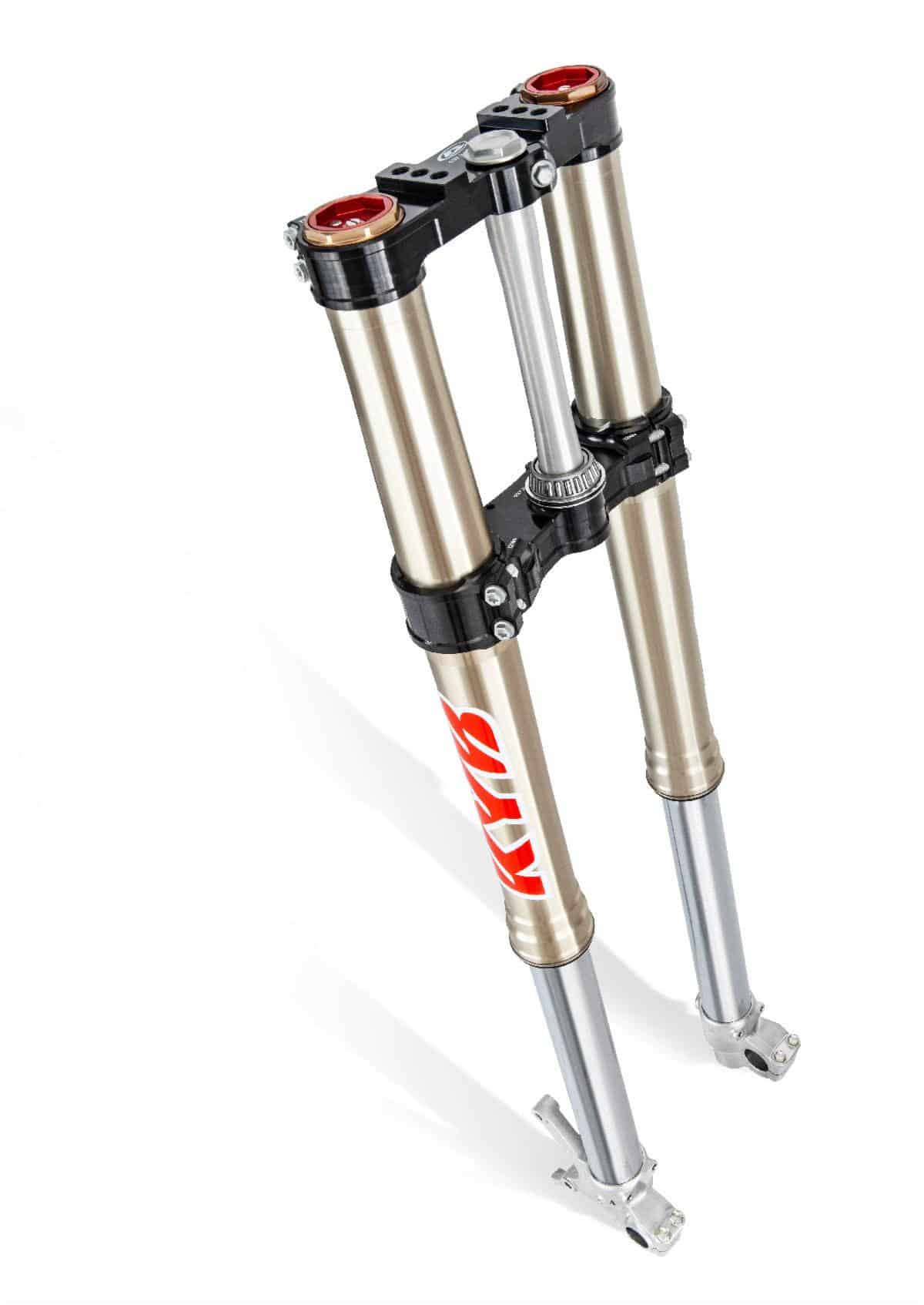 One thing we do like is KYB spring suspension which you’re able to make a lot of adjustments to ensure they’re set up for you.
One thing we do like is KYB spring suspension which you’re able to make a lot of adjustments to ensure they’re set up for you.
Kayaba (KYB) suspensions:
Fork (48mm) and single shock (50mm) are specifically calibrated on the new range models, focusing on their rideability and stability when the pace rises. The resulting setting is enough to make any rider confident, from amateurs to professionals.
Nissin braking system:
With floating calipers and 260mm Galfer discs at the front and 240mm at the rear, for powerful and modular braking.
Chain:
Non-o-ring, lighter, and smoother.
Lithium battery:
Lighter and a must for quick starts.
Handlebar silent block:
Xtrig Flexfit bar mounts provide a comfortable grip on the handlebar for enhanced control and reduced vibration.
 Rounding out the features of the 2026 models Beta has spent a lot of time working on the mapping.
Rounding out the features of the 2026 models Beta has spent a lot of time working on the mapping.
Engine maps:
All the RX models are equipped with two specific engine maps (wet and dry), while the 4-Stroke model has also four levels of Traction Control (on/off/active with hard map/active with soft map) to manage the vehicle’s significant power in all terrain conditions. The button to select the map and TC is located on the handlebar bumpers.



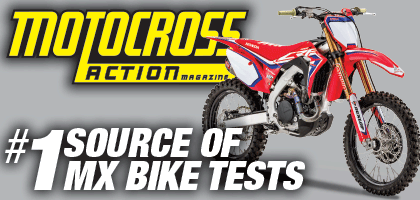
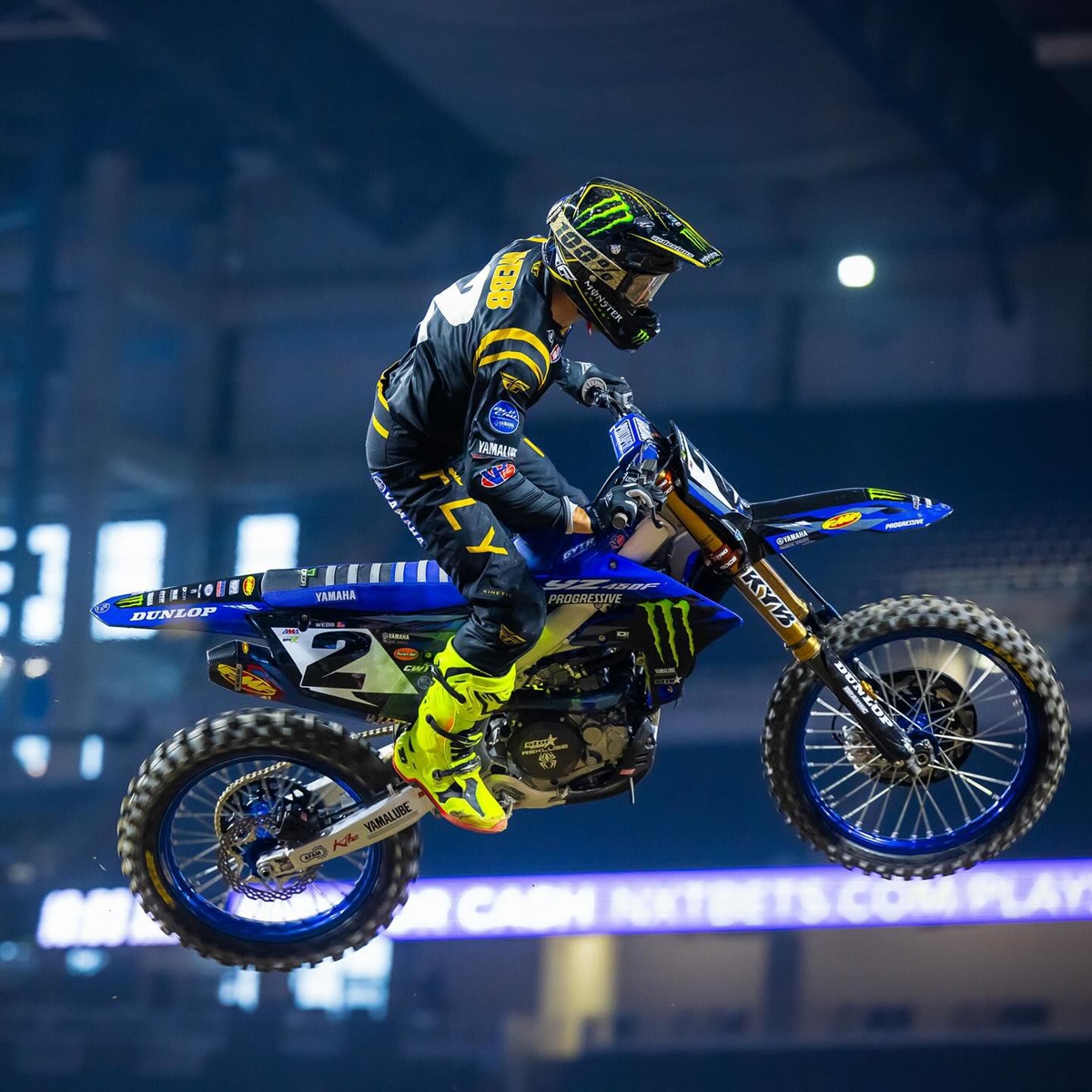

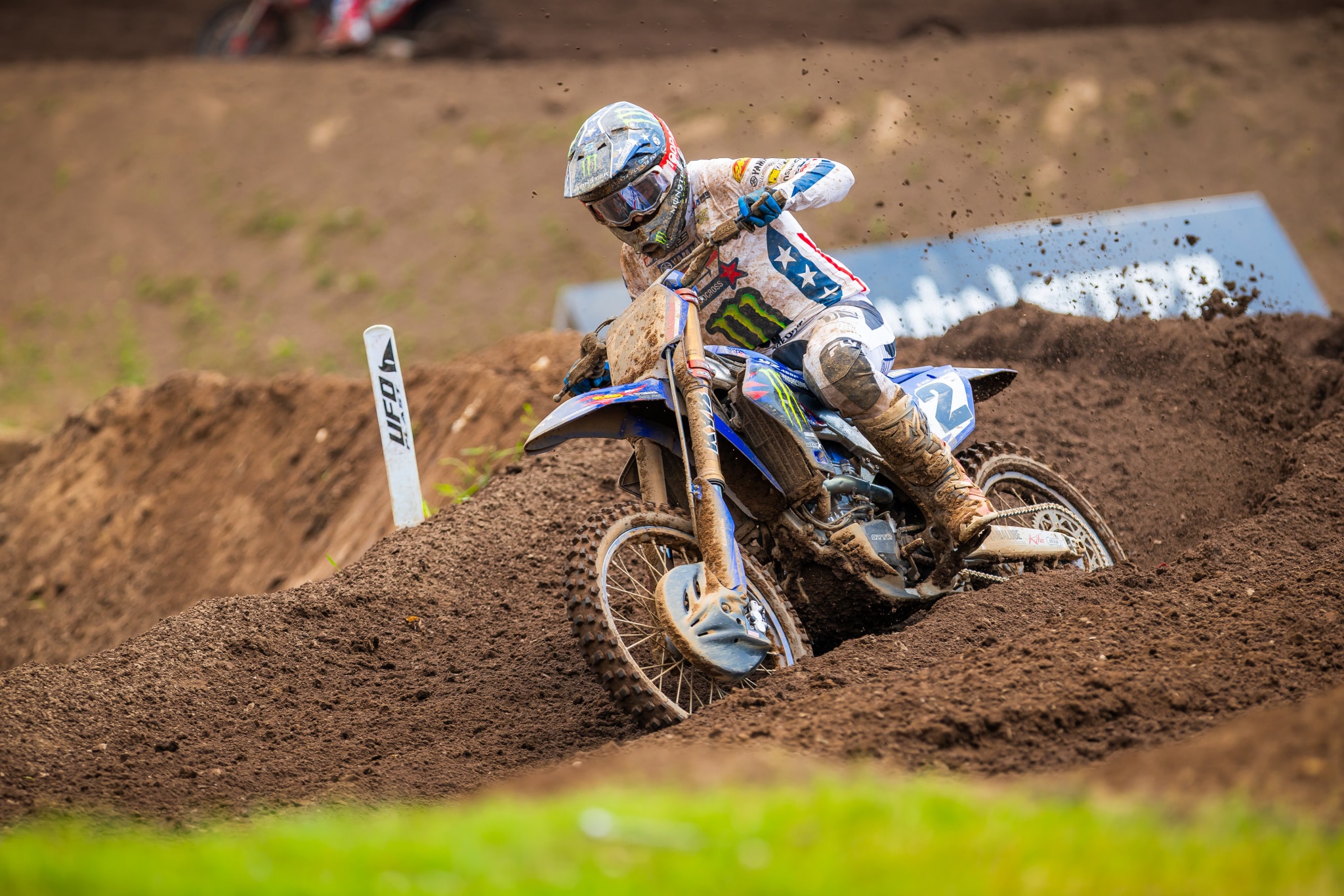

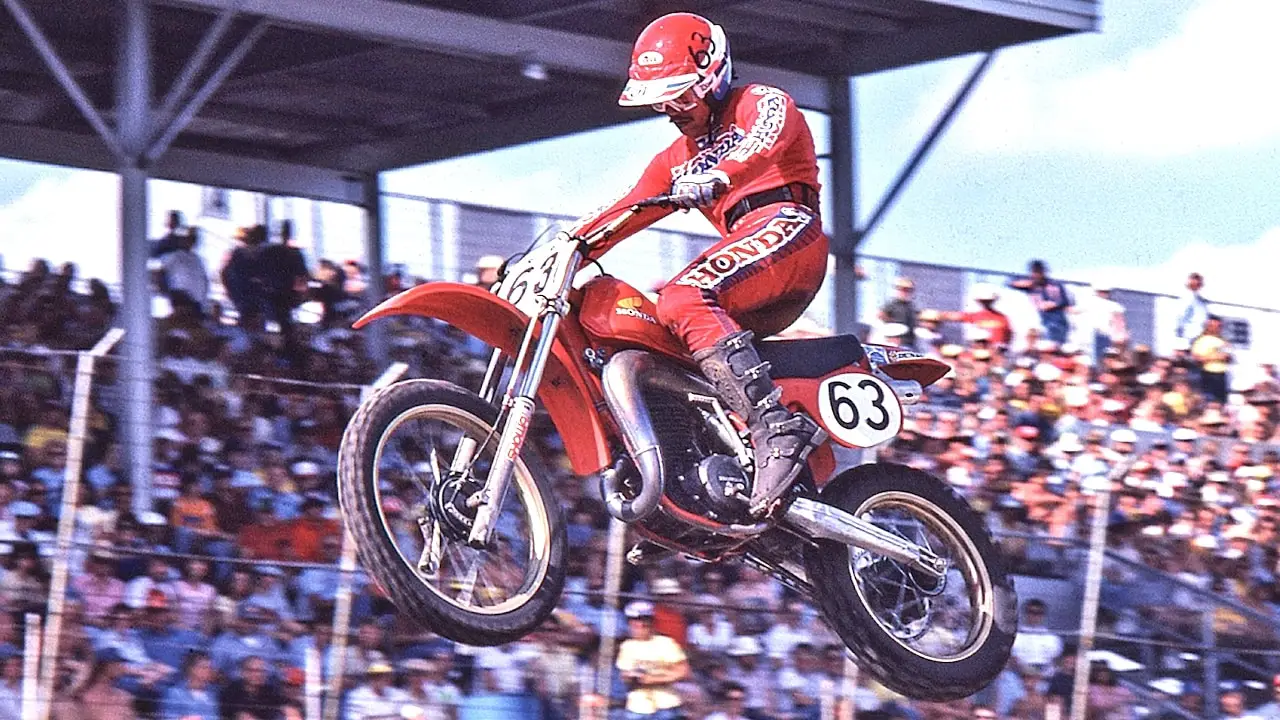












 English (US) ·
English (US) ·  French (CA) ·
French (CA) ·